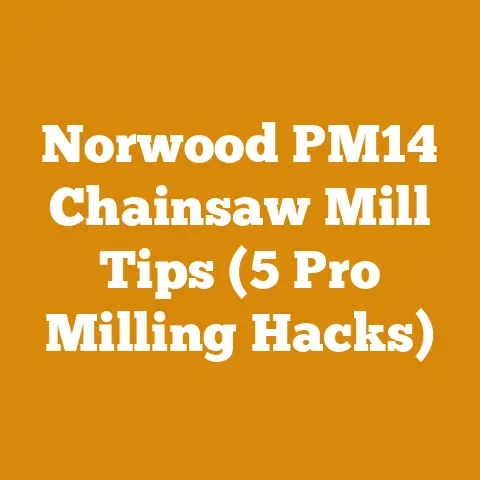How Much Does It Cost to Rent a Forestry Mulcher? (5 Pro Tips)
Alright, let’s dive into the surprisingly complex world of forestry mulcher rentals.
How Much Does It Cost to Rent a Forestry Mulcher? (5 Pro Tips)
Isn’t it ironic? We live in a world where you can order a pizza with drone delivery, but figuring out the cost of renting a forestry mulcher feels like deciphering ancient hieroglyphs. You’d think it would be simple, right? I’ve wrestled with this question myself more times than I care to admit. From clearing overgrown land for a small hobby farm to helping a friend prep a logging site, I’ve learned that the price tag on forestry mulcher rentals is about as predictable as the weather.
So, buckle up. We’re going to demystify the costs, explore the variables, and arm you with the knowledge to navigate the forestry mulcher rental landscape like a seasoned pro. I’ll share my own experiences, data-backed insights, and practical tips to help you make informed decisions and avoid those “sticker shock” moments.
Understanding the Maze: The Real Cost of Renting a Forestry Mulcher
Before we jump into the numbers, let’s be brutally honest: there’s no single, magical price. The cost of renting a forestry mulcher is a tangled web of factors.
- Mulcher Size and Type: Skid-steer attachments, dedicated tracked mulchers, PTO-driven behemoths – each has a different price point.
- Rental Duration: Hourly, daily, weekly, monthly – the longer you rent, the lower the per-day cost usually is.
- Location, Location, Location: Rental rates fluctuate wildly based on region and local demand.
- Dealer Markup: Some rental companies are just… pricier.
- Insurance and Fees: Don’t forget the hidden costs!
- Fuel and Maintenance: You’re often responsible for these.
- Transportation: Getting the mulcher to and from the job site can add a significant chunk to the bill.
I remember once, I was so focused on the hourly rental rate that I completely forgot to factor in the cost of transporting a tracked mulcher to a remote site. Let’s just say that was a painful lesson in budgeting!
Pro Tip #1: Decoding the Mulcher Landscape
Forestry mulchers aren’t one-size-fits-all. Let’s break down the main types and how their capabilities impact rental costs.
- Skid-Steer Mulcher Attachments: These are generally the most affordable option. They are versatile, utilizing your existing skid-steer. However, they are best suited for smaller jobs and lighter brush. Expect to pay anywhere from $300 to $800 per day, depending on the size and power of the attachment. I’ve personally used these on a 5-acre property, clearing light underbrush and small trees. It’s a cost-effective solution if you already own or rent a skid-steer.
- Dedicated Tracked Forestry Mulchers: These are the heavy hitters. They’re self-propelled, powerful, and designed for serious land clearing. Their rental costs reflect this, ranging from $800 to $2,000+ per day. I’ve seen these used on large-scale logging operations and right-of-way clearing projects. The advantage is their ability to handle dense vegetation and steep terrain.
- PTO-Driven Mulchers: These are typically used with tractors and are a viable option for agricultural applications. Rental costs vary depending on the size and power of the mulcher and the tractor required, generally falling in the $500-$1,200 per day range.
Data Point: According to a 2023 report by EquipmentWatch, the average daily rental rate for a tracked forestry mulcher is $1,250, while a skid-steer attachment averages $550. These are just averages, of course, and can vary greatly by region and specific model.
Understanding Horsepower and Flow Rate: When selecting a mulcher, pay close attention to the horsepower requirements and hydraulic flow rate. A mulcher that’s underpowered for your skid-steer or tractor will perform poorly and potentially damage your equipment.
Personal Story: I once rented a skid-steer mulcher attachment without checking the hydraulic flow rate. The mulcher barely spun, and I wasted an entire day. Always double-check compatibility!
Pro Tip #2: Rental Duration: The Sweet Spot
The longer you rent, the lower the daily rate usually becomes. However, “usually” is the key word here.
- Hourly Rentals: Expect to pay a premium. These are generally only cost-effective for very small jobs that can be completed in a few hours.
- Daily Rentals: A good option for projects that take a day or two.
- Weekly Rentals: This is often the “sweet spot” for cost savings. The daily rate is significantly lower than a daily rental.
- Monthly Rentals: If you have a large project that will take several weeks, a monthly rental can be the most economical option.
Example: Let’s say a forestry mulcher rents for $1,000 per day. A weekly rental might cost $4,000 (a daily rate of $571), and a monthly rental might cost $12,000 (a daily rate of $400).
The Catch: Be realistic about how long your project will actually take. Paying for a week when you only need three days is a waste of money. I’ve made this mistake myself, overestimating my capabilities and underestimating the difficulty of the job.
Negotiation: Don’t be afraid to negotiate with the rental company, especially for longer rental periods. They may be willing to offer a discount.
Pro Tip #3: Location, Location, and Demand
Rental rates are heavily influenced by location and demand. Areas with high demand for forestry mulching services will generally have higher rental rates.
- Urban vs. Rural: Rental rates tend to be higher in urban areas due to higher operating costs and increased demand.
- Seasonal Fluctuations: Demand for forestry mulchers often peaks during the spring and fall, when the weather is favorable for land clearing. Rental rates may be higher during these peak seasons.
- Local Competition: The more rental companies in your area, the more competitive the pricing.
Research: Call around to several rental companies in your area to compare prices. Don’t just rely on online quotes.
Consider Distance: Factor in the cost of transporting the mulcher from the rental company to your job site. Sometimes, it’s worth paying a slightly higher rental rate to a company that’s closer to your location.
Personal Story: I once drove an extra 50 miles to rent a mulcher from a company that offered a significantly lower rate. However, after factoring in the cost of fuel and my time, it wasn’t as much of a savings as I had initially thought.
Pro Tip #4: Unmasking Hidden Costs
The base rental rate is just the tip of the iceberg. Here are some hidden costs to watch out for:
- Insurance: Rental companies typically require you to have insurance coverage for the equipment. You may be able to use your existing insurance policy, or you may need to purchase a separate policy from the rental company. This can add $50 to $200+ per day.
- Delivery and Pickup Fees: Transportation costs can be substantial, especially for large tracked mulchers. Expect to pay several hundred dollars for delivery and pickup.
- Fuel: You’re typically responsible for providing fuel for the mulcher. Forestry mulchers can consume a significant amount of fuel, so factor this into your budget.
- Maintenance and Repairs: You may be responsible for routine maintenance, such as greasing and changing filters. You may also be liable for any damage to the equipment during the rental period. Always inspect the machine thoroughly before accepting it and document any pre-existing damage.
- Environmental Fees: Some rental companies charge environmental fees for the use of forestry mulchers.
- Cleaning Fees: If you return the mulcher in a dirty condition, you may be charged a cleaning fee.
Read the Fine Print: Carefully review the rental agreement to understand your responsibilities and potential costs.
Ask Questions: Don’t be afraid to ask the rental company about any fees or charges that you don’t understand.
Personal Story: I once returned a mulcher with a slightly clogged air filter and got hit with a hefty cleaning fee. Now, I always make sure to thoroughly clean the equipment before returning it.
Pro Tip #5: Optimizing Your Budget: Saving Every Penny
Now that you understand the cost factors, let’s talk about how to optimize your budget and save money.
- Accurate Project Scope: Precisely define the area you need to clear. Overestimating the scope can lead to unnecessary rental days.
- Proper Site Preparation: Remove any large rocks, stumps, or other obstacles before starting the mulching process. This will reduce wear and tear on the mulcher and improve its efficiency.
- Efficient Operation: Operate the mulcher at the recommended speed and depth. Avoid overloading the machine, as this can damage it and reduce its performance.
- Regular Maintenance: Perform routine maintenance, such as greasing and cleaning the mulcher, to keep it running smoothly.
- Compare Multiple Quotes: Get quotes from several rental companies to compare prices and find the best deal.
- Negotiate: Don’t be afraid to negotiate with the rental company. You may be able to get a discount, especially for longer rental periods.
- Consider Alternatives: Depending on the size and scope of your project, you may want to consider alternatives to forestry mulching, such as hand clearing or using a brush hog.
- Plan Ahead: Book your rental in advance, especially during peak seasons, to ensure availability and potentially secure a better rate.
- Check for Government Programs: Some government programs offer financial assistance for land clearing and forestry management projects. Check with your local government agencies to see if any programs are available in your area.
Example Calculation: Comparing Mulching vs. Hand Clearing
Let’s say you need to clear 1 acre of land. You estimate that it would take you 40 hours to clear the land by hand, at a rate of $20 per hour (your own labor). The total cost would be $800.
Alternatively, you could rent a skid-steer mulcher attachment for $500 per day. You estimate that it would take you one day to clear the land with the mulcher. The total cost would be $500.
In this example, renting the mulcher would be the more cost-effective option. However, this calculation doesn’t factor in the physical exertion of hand clearing.
Remember: Time is money. While hand clearing might seem cheaper initially, the time you save by using a mulcher could be more valuable in the long run.
Real-World Cost Examples: From Small Jobs to Large-Scale Projects
To give you a better sense of the potential costs, let’s look at some real-world examples:
- Small Residential Lot Clearing (0.5 acres): Using a skid-steer mulcher attachment for one day might cost $500 (rental) + $100 (fuel) + $50 (insurance) = $650.
- Medium-Sized Land Clearing (5 acres): Renting a tracked forestry mulcher for one week might cost $4,000 (rental) + $500 (fuel) + $300 (insurance) + $500 (delivery/pickup) = $5,300.
- Large-Scale Commercial Project (50 acres): Renting multiple tracked forestry mulchers for one month might cost $60,000+ (rental) + significant fuel and transportation costs.
Important Note: These are just examples. Your actual costs will vary depending on the specific factors outlined above.
Data-Driven Insights: Industry Benchmarks and Statistics
To provide further context, let’s look at some industry benchmarks and statistics:
- Average Hourly Rental Rate for Skid-Steer Mulcher Attachment: $75 – $150
- Average Hourly Rental Rate for Tracked Forestry Mulcher: $150 – $300+
- Average Fuel Consumption for Tracked Forestry Mulcher: 8-12 gallons per hour
- Average Insurance Cost for Forestry Mulcher Rental: $50 – $200+ per day
Source: These figures are based on industry reports, rental company websites, and my own experience.
Global Perspective: Rental rates for forestry mulchers can vary significantly around the world. In some countries, labor costs are lower, making hand clearing a more competitive option. In other countries, environmental regulations may restrict the use of forestry mulchers.
- Limited Budget: They may have a smaller budget than larger companies, making it difficult to afford the high cost of renting a mulcher.
- Remote Locations: They may operate in remote locations, which can increase transportation costs.
- Seasonal Work: Their work may be seasonal, making it difficult to justify the cost of renting a mulcher for extended periods.
- Lack of Credit: They may have difficulty obtaining credit from rental companies.
Solutions:
- Explore Financing Options: Look into financing options, such as loans or leases, to help cover the cost of renting a mulcher.
- Partner with Other Loggers: Consider partnering with other loggers to share the cost of renting a mulcher.
- Focus on Niche Markets: Specialize in niche markets, such as selective logging or firewood production, to increase profitability.
- Build Relationships with Rental Companies: Establish a good relationship with a local rental company to potentially negotiate better rates.
Technical Considerations: Calculating Volume and Drying Time
While cost is paramount, understanding technical aspects is crucial for efficient wood processing:
- Calculating Log Volume: You’ll often need to calculate the volume of logs in board feet or cords to determine their value. There are various formulas for doing this, such as the Doyle Log Scale or the Scribner Log Scale.
- Estimating Drying Time: The drying time for firewood depends on several factors, including the wood species, moisture content, and climate. A general rule of thumb is that hardwoods take 6-12 months to dry properly. You can use a moisture meter to check the moisture content of the wood. Ideally, firewood should have a moisture content of 20% or less.
Formulas:
- Doyle Log Scale: Board Feet = (Small End Diameter in Inches – 4)^2 * Length in Feet / 16
- Cord Volume: 1 Cord = 128 Cubic Feet
Remember: Proper drying is essential for efficient burning and reducing creosote buildup in your chimney.
Actionable Takeaways and Next Steps
Okay, you’ve made it through the gauntlet. Here’s a recap of actionable takeaways:
- Define your project scope precisely.
- Research different types of forestry mulchers and their capabilities.
- Get quotes from multiple rental companies.
- Carefully review the rental agreement and understand all fees and charges.
- Negotiate with the rental company to get the best possible price.
- Plan ahead and book your rental in advance.
- Consider alternatives to forestry mulching, such as hand clearing or using a brush hog.
- Perform routine maintenance on the mulcher to keep it running smoothly.
- Operate the mulcher efficiently to minimize fuel consumption and wear and tear.
- Explore financing options or partnerships to help cover the cost of renting a mulcher.
Next Steps:
- Start researching rental companies in your area.
- Contact several rental companies and get quotes for the specific type of forestry mulcher you need.
- Compare the quotes and choose the best option based on price, availability, and terms.
- Book your rental and start planning your project!
Budgeting for Firewood Preparation: A Case Study
Let’s examine a case study of budgeting for firewood preparation:
Scenario: You want to prepare 10 cords of firewood for the winter.
Costs:
- Timber Purchase: $50 per cord (standing timber) = $500
- Chainsaw: $500 (initial purchase) + $100 (maintenance) = $600
- Fuel and Oil: $50 per cord = $500
- Splitting Maul/Axe: $100
- Labor (Your Time): 4 hours per cord * $20 per hour = $80 per cord = $800
- Truck/Trailer: $100 (fuel and maintenance)
Total Cost: $500 + $600 + $500 + $100 + $800 + $100 = $2600
Cost per Cord: $2600 / 10 cords = $260 per cord
Market Value of Firewood: $350 – $450 per cord (depending on location and wood species)
Profit: $90 – $190 per cord (if selling the firewood)
Note: This is a simplified example. Your actual costs will vary depending on the specific factors involved.
Idioms and Expressions for the Global Woodworker
To make this a bit more relatable, let’s throw in some idioms and expressions:
- “Barking up the wrong tree”: Focusing on the wrong cost factor.
- “Cutting corners”: Trying to save money by sacrificing quality or safety.
- “Out on a limb”: Taking a risk by renting a mulcher without properly assessing the costs.
- “A penny saved is a penny earned”: Every dollar you save on rental costs goes directly into your pocket.
- “Don’t count your chickens before they hatch”: Don’t assume you’ll make a profit until you’ve actually sold the firewood.
Final Thoughts: The Forest for the Trees
Renting a forestry mulcher can be a game-changer for land clearing and wood processing projects. But as I’ve learned (sometimes the hard way), navigating the cost landscape requires careful planning, research, and a healthy dose of skepticism. By understanding the cost factors, optimizing your budget, and avoiding hidden fees, you can make informed decisions and get the job done without breaking the bank. Remember, the key is to see the forest for the trees – to understand the big picture and focus on the most important cost drivers. Now, go forth and mulch!






